Proven Strategies to Boost Hotel Housekeeping Efficiency and Elevate Guest Satisfaction
Aug 5, 2025
 Mika Takahashi
Mika TakahashiPopular Categories
Hotel Technology & InnovationHotel Operations OptimizationDigital MarketingIndustry TrendsRevenue ManagementHospitality Industry
Popular Categories
Trending Post
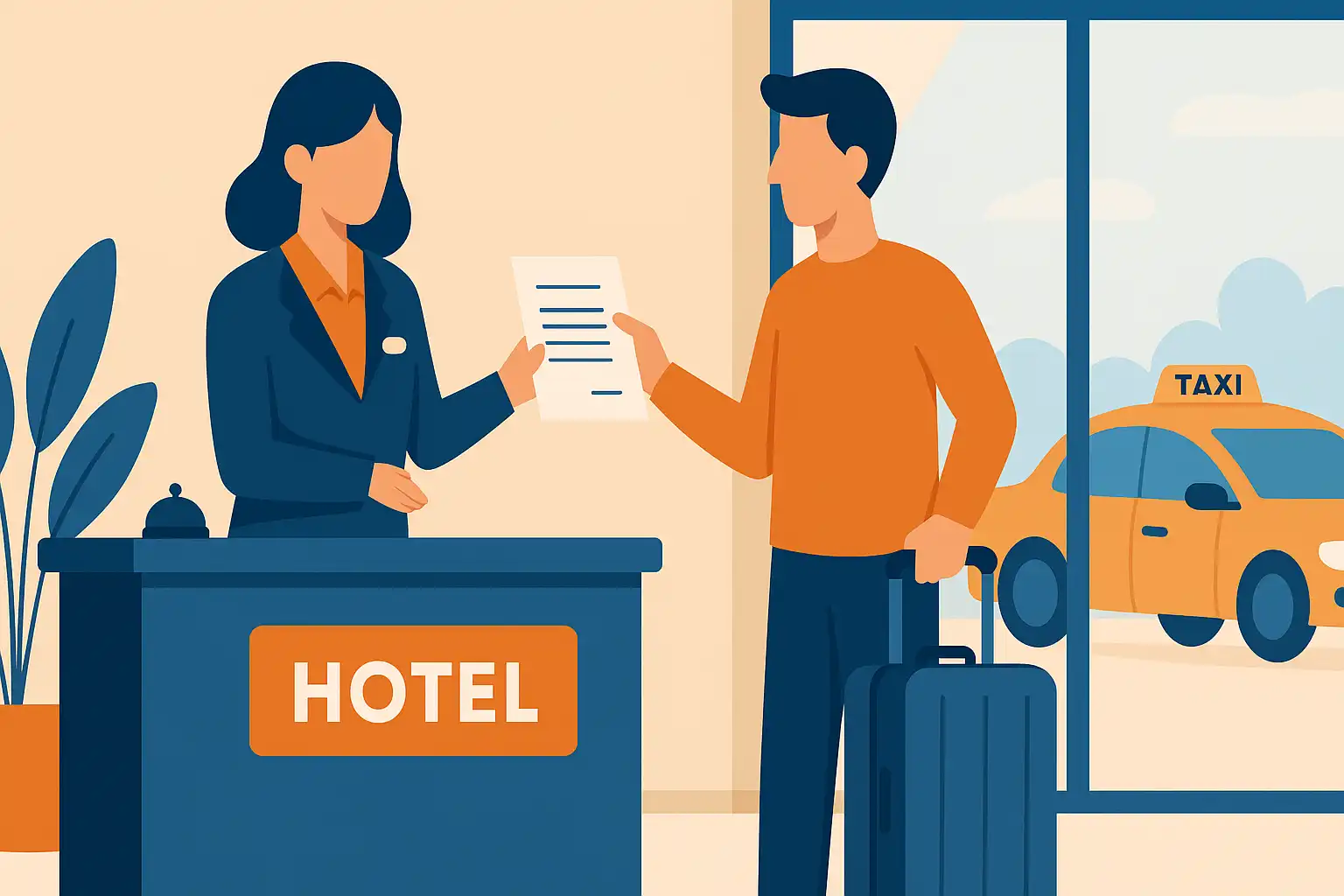
Hotel Walk Letter Template: Professional Guest Communication
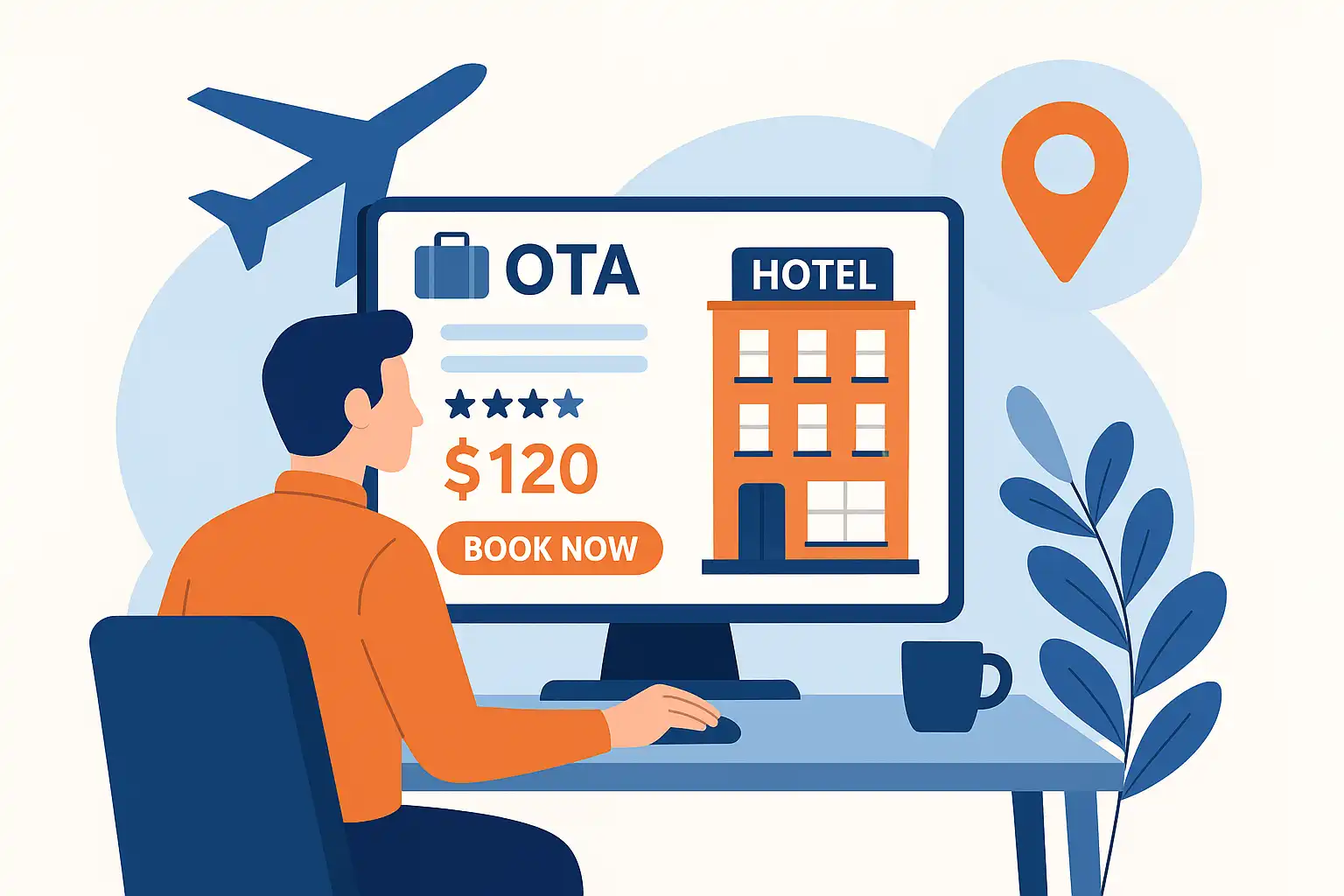
Online Travel Agents: What They Are and How They Work
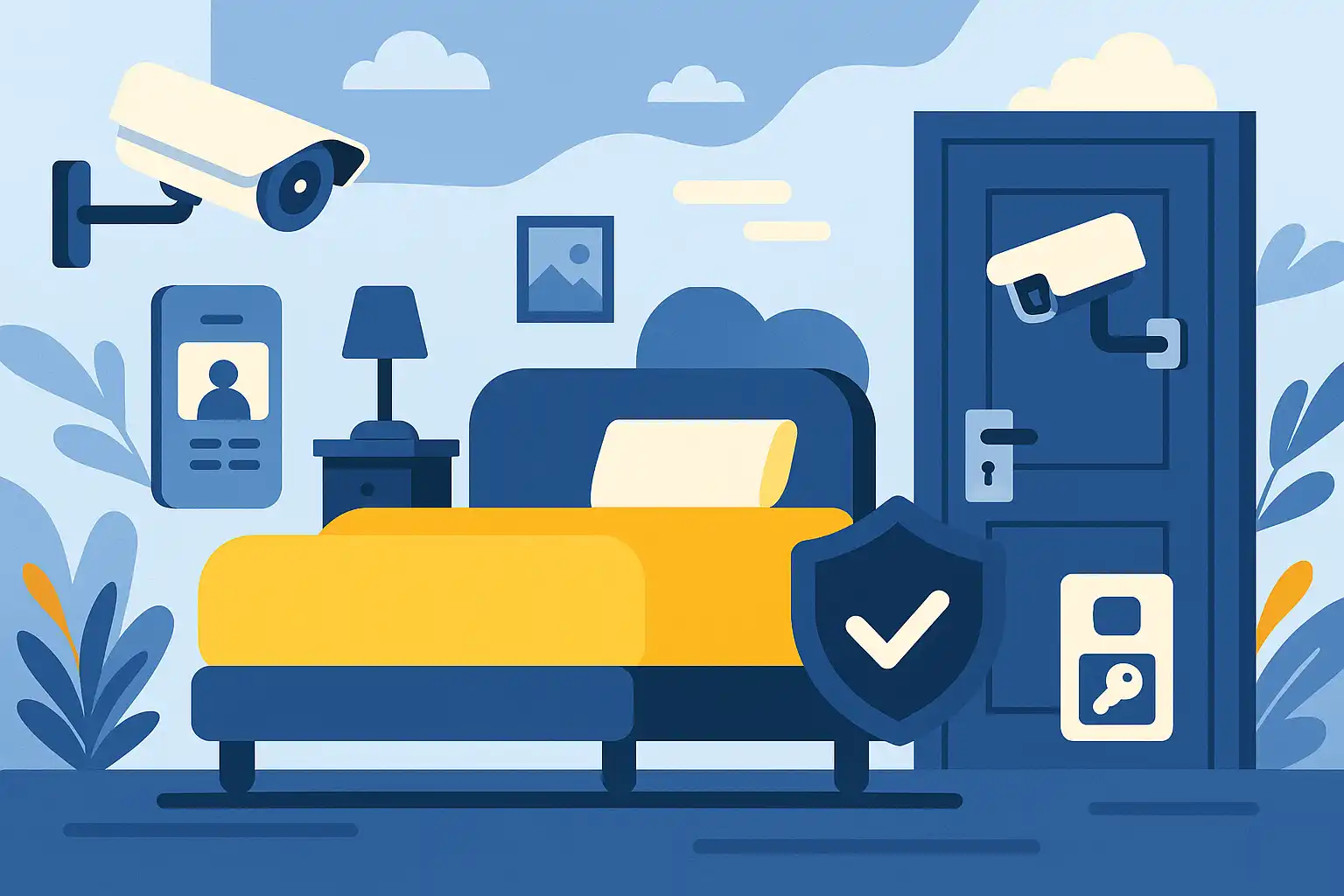
Hotel Security Systems: Modern Protection Solutions

Hotel Advertising: Complete Guide to Boost Bookings and Revenue
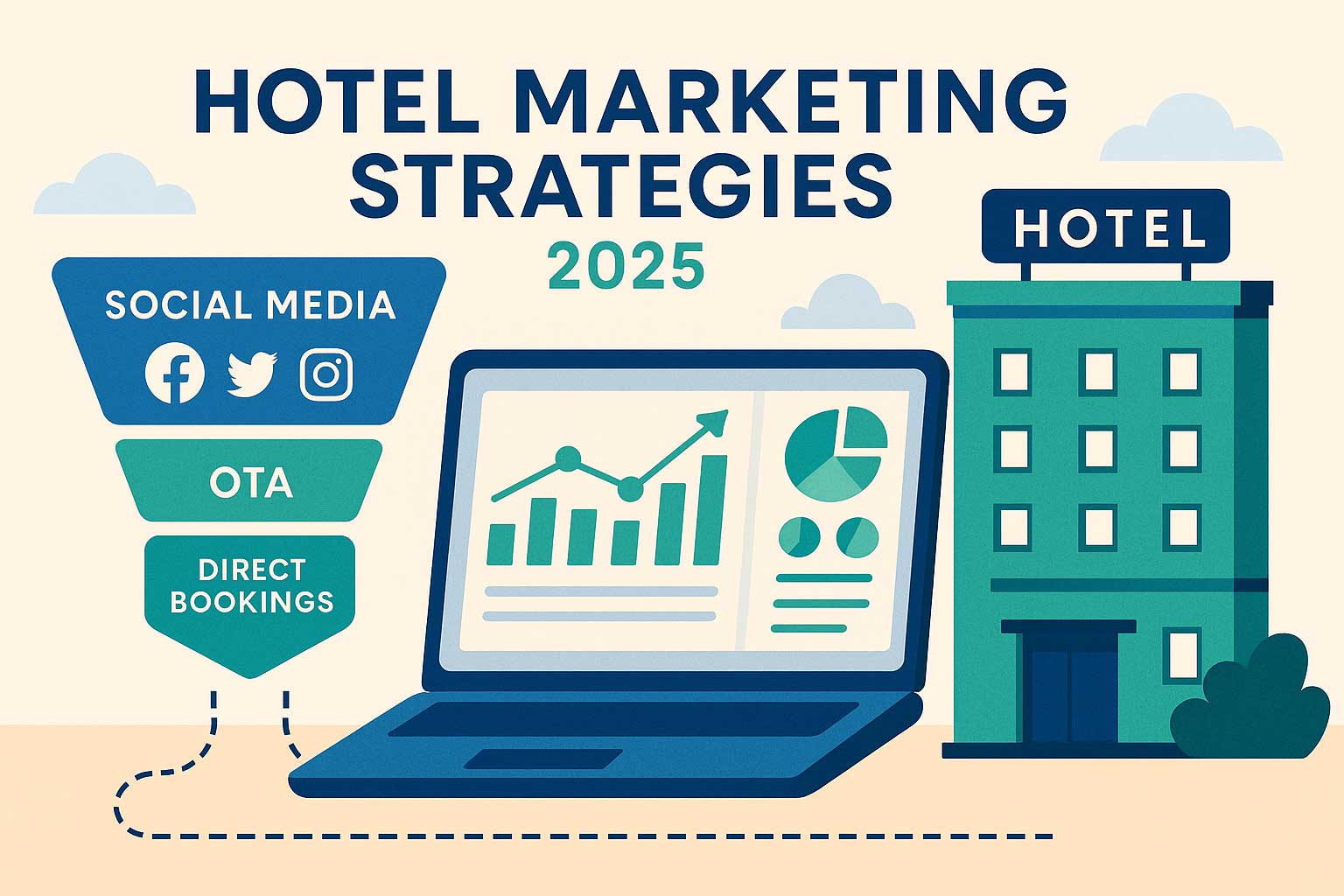
25 Hotel Marketing Strategy Ideas for 2025: Complete Guide

AI Reservation Agent: Revolutionizing Hotel Booking and Guest Experience

PMS Communication: Streamlining Property Management Through Effective Guest Messaging
Table of contents
In the world of hospitality, housekeeping efficiency isn’t just about keeping things tidy—it’s a game changer that can make or break your hotel’s bottom line. From improving guest satisfaction scores to increasing revenue per available room, every detail counts. Studies show that even a small bump in cleanliness ratings can boost booking rates by 2-4%, so optimizing your housekeeping operations is about much more than just clean rooms—it’s about driving real business results.
Today’s hotel housekeeping teams face a unique set of challenges: tight labor markets, rising costs, and guests who expect nothing less than perfection. But the most successful hotels have found that by taking a systematic approach to housekeeping efficiency, they can cut costs, enhance the guest experience, and ultimately increase revenue. This guide will walk you through the proven metrics, smart technology, and operational best practices that turn your housekeeping team into a powerful profit center.
Understanding Hotel Housekeeping Efficiency
Hotel housekeeping efficiency goes beyond just speed—it’s about fine-tuning every part of the cleaning process, from how labor is allocated to how resources are managed. The goal? To boost productivity and guest satisfaction while keeping costs down. When done right, this approach directly improves your hotel’s profitability by raising guest satisfaction scores, cutting operational expenses, and increasing RevPAR.
At the heart of hotel housekeeping efficiency is a structured method inspired by Lean management principles. The 7S framework—Sort, Systematize, Sweep, Standardize, Self-discipline, Sustain, and Safety—helps keep workspaces organized and safe, cutting down on wasted time and effort. This framework supports smoother daily operations and stronger long-term performance.
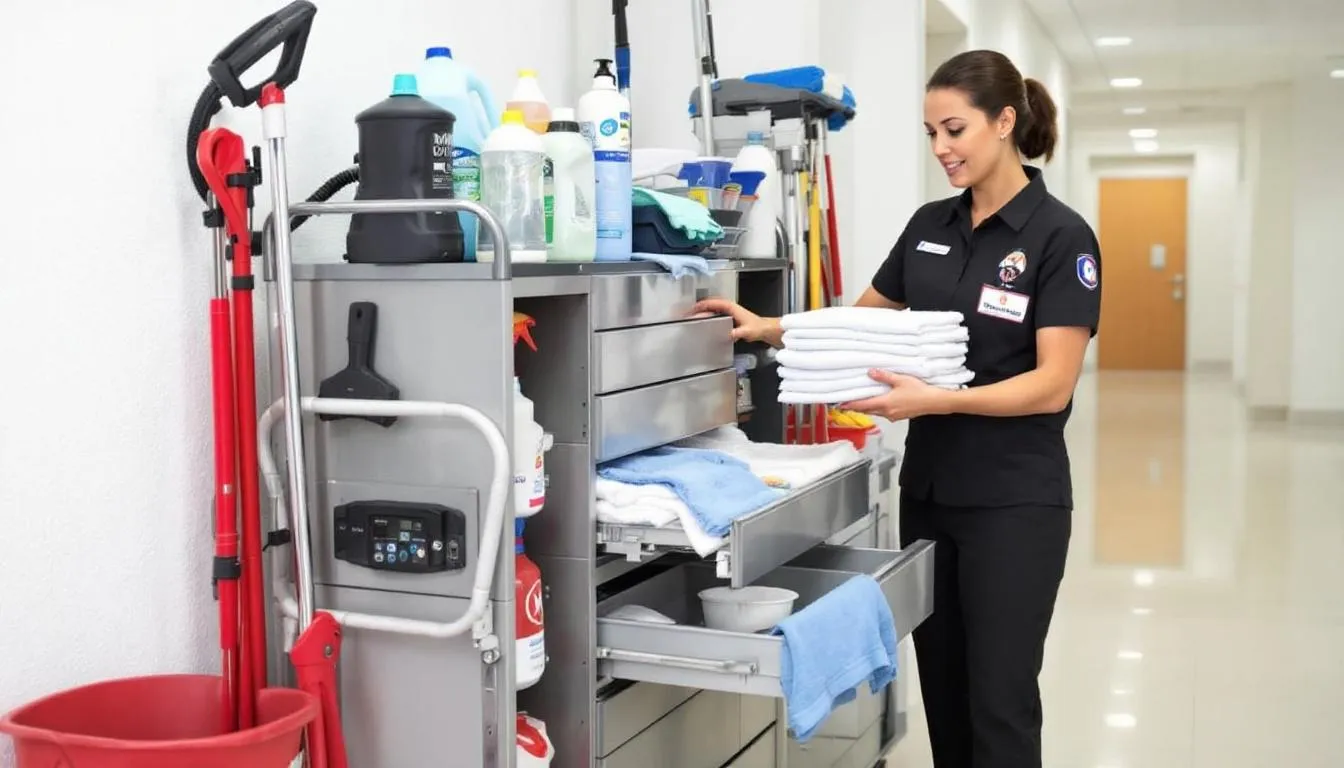
To measure how well your team is doing, focus on key performance indicators like rooms cleaned per hour, cost per clean, staff productivity, inventory use, and guest feedback. These numbers connect your daily operations to your business goals and help pinpoint areas for improvement. Top hotels typically clean a standard room in 25-35 minutes while maintaining a 98% pass rate on quality inspections.
What’s more, efficient hotel housekeeping has a direct link to revenue. Happy guests who notice a spotless room are more likely to book again and pay premium rates. Hotels that nail housekeeping efficiency can increase their average daily rates and rely less on third-party booking sites, boosting their profits.
Essential Metrics for Measuring Hotel Housekeeping Performance
To keep your hotel housekeeping running like a well-oiled machine, you need to measure the right things. Room cleaning time is a basic but vital metric—leading hotels aim for 25-35 minutes per standard clean. But speed isn’t everything; quality must stay high to keep guests happy.
Quality inspection scores are just as important. The best hotels maintain at least a 98% pass rate by using detailed checklists that ensure every corner meets brand standards. Many now use digital tools that let them track quality in real time and analyze trends over time.
| Room Type | Target Cleaning Time | Quality Standard | Staff Ratio |
|---|---|---|---|
| Standard Guest Room | 25-35 minutes | 98% pass rate | 11-14 rooms/day |
| Suite | 45-60 minutes | 99% pass rate | 8-10 rooms/day |
| Luxury Room | 40-50 minutes | 99.5% pass rate | 9-12 rooms/day |
Another key metric is the vacant-to-clean turnaround time—the window between when a guest checks out and the room is ready for the next arrival. This time is critical during busy periods; delays here can mean lost bookings and unhappy guests. The best hotels keep this under 30 minutes by organizing dedicated task teams and smart staffing.
Quality of Service Measurement
Measuring service quality means looking at feedback from multiple angles. Post-cleaning inspection checklists are the backbone, covering everything from visible cleanliness and odor control to restocking amenities and bathroom hygiene. Digital checklists integrated with your property management system ensure consistency, with timestamps and digital signatures adding accountability.
Guest feedback has also evolved. Beyond simple surveys, hotels now analyze reviews from platforms like TripAdvisor and Booking.com using advanced tools that track cleanliness mentions and scores over time. This helps housekeeping teams fix problems before they affect overall guest satisfaction.
Mystery shopper programs add another layer of insight by providing unbiased third-party evaluations. These assessments compare rooms to brand standards, revealing gaps between internal checks and guest perceptions. Some hotels also use occupancy sensors and digital logs to track cleaning times alongside inspection results for continuous improvement.
Time Management Optimization
Breaking down how time is spent on cleaning tasks helps identify your star performers and bottlenecks. Mobile apps and digital trackers log when tasks start and finish, creating profiles that highlight best practices and areas for improvement. But remember, faster isn’t always better—quality must remain top priority.
Tracking turnaround time from checkout to room readiness is essential for spotting delays that hurt revenue. Hotels that excel here often use preassigned teams and coordinate across departments, especially during peak check-in times. Real-time dashboards empower managers to shift staff quickly and keep things moving smoothly.
Staff-to-room ratios should adjust with occupancy and service expectations. Standard hotels generally assign 11-14 rooms per housekeeper daily, while luxury properties have lower ratios to ensure detailed service. Dynamic scheduling tools help managers balance coverage and costs in real time.
Technology Solutions for Enhanced Efficiency
Hotel housekeeping software is a game changer for boosting efficiency. Integrated with hotel management software, these platforms streamline task assignments, room status updates, inventory tracking, and performance analytics. They eliminate paper-based processes and improve communication between housekeeping, supervisors, and front desk teams.
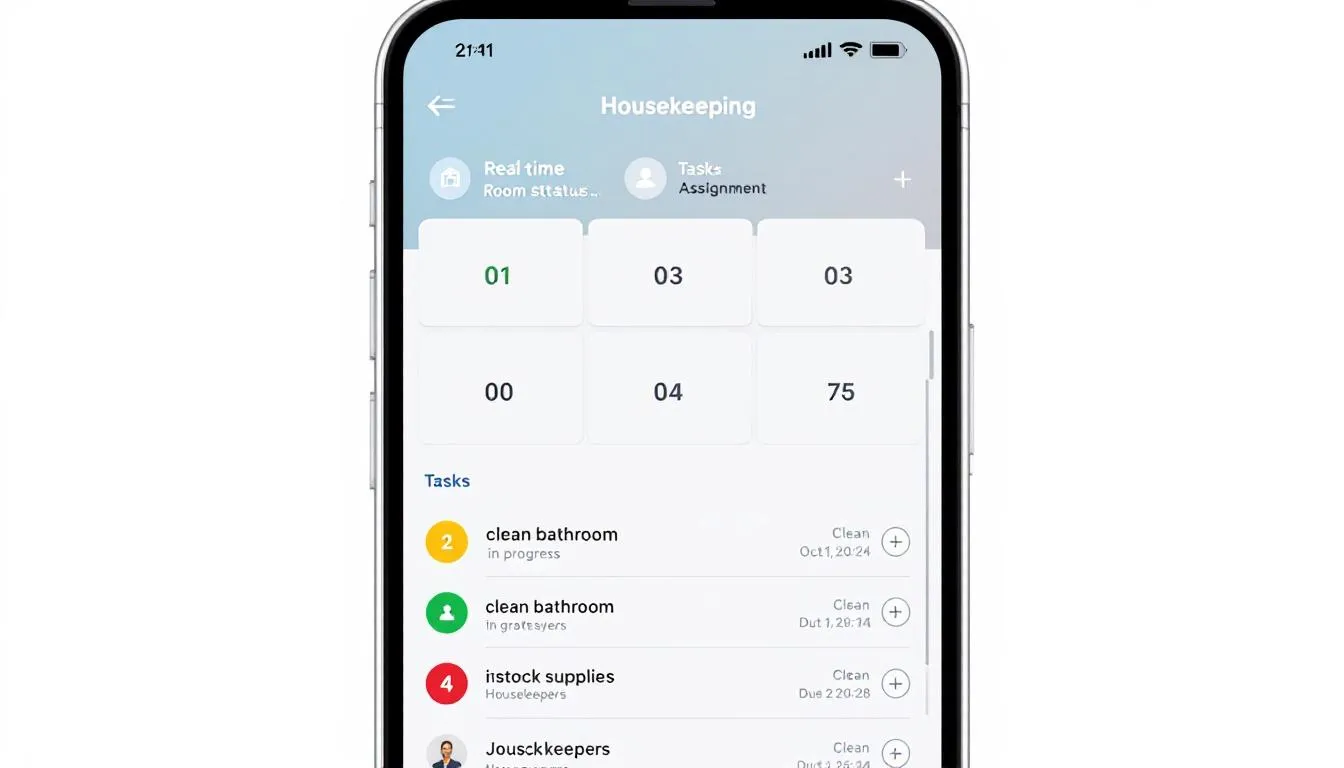
Mobile apps for iOS and Android let housekeeping staff and supervisors receive assignments, update room statuses, and report maintenance issues instantly. Many use AI to prioritize urgent or VIP rooms based on guest arrivals, reducing task times by 15-20% while keeping service consistent.
Digital checklists within housekeeping software standardize cleaning steps and keep thorough records. Staff can see room-specific requirements, mark tasks done, and upload photos for quality checks—all synced with central systems for supervisor review and guest coordination.
Cloud-based inventory systems track supplies and automatically reorder before shortages occur. They analyze usage by room type and season, helping reduce waste and carrying costs. Integration with suppliers automates orders and flags unusual usage that could signal problems.
Real-Time Communication Systems
Real-time communication cuts out delays and errors common with paper-based reporting. Mobile apps connected to property management systems provide instant updates on room status—whether cleaned, inspected, ready, or out of service—and sync minibar charges, maintenance requests, and lost-and-found management.
Automated alerts notify supervisors about priority rooms for early arrivals or late checkouts, reducing wait times and boosting guest satisfaction. These systems can also automatically assign rooms based on guest preferences, staff availability, and maintenance schedules, smoothing the entire guest journey.
Case studies show major hotels cutting room turnaround times by 20-30%, improving communication between supervisors and staff, and reducing errors from misassigned or missed tasks. Real-time updates combined with guest services let teams solve problems before guests even notice.
Staff Training and Development Strategies
Consistent hotel housekeeping efficiency starts with solid training. Comprehensive onboarding programs introduce new hires to cleaning techniques, safety standards, and brand protocols using digital learning and hands-on practice. These usually last 1-2 weeks and include performance checks before staff work independently.
Cross-training boosts flexibility by rotating staff through housekeeping and laundry roles. This helps during busy times or labor shortages, letting trained employees switch tasks without sacrificing quality. Hotels with cross-training see 25-30% better scheduling flexibility and lower overtime costs.
Performance coaching uses cleaning time data and inspection results to pinpoint where individuals need help and to recognize top performers for mentoring and boosting room‑ready turnaround. This targeted approach ensures training focuses on the biggest opportunities to improve efficiency.
Reward programs tied to both speed and quality lift morale and reduce turnover. Many hotels offer bonuses based on guest feedback, efficiency gains, and safety compliance, creating friendly competition while keeping service excellence front and center.
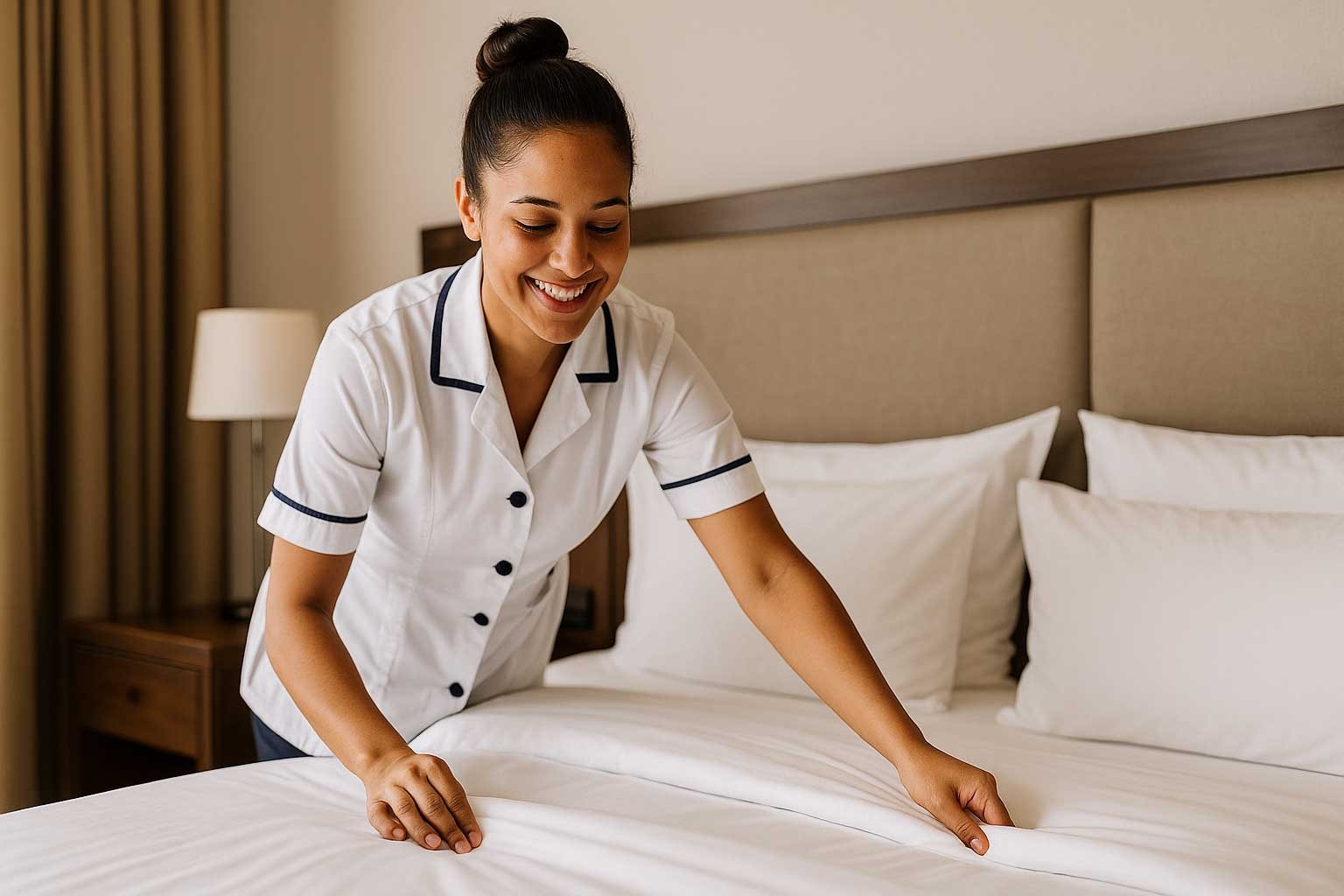
Operational Best Practices
Organized carts are essential. When housekeeping staff start their shifts with carts stocked according to daily reservations, they avoid time-consuming supply runs. Standard layouts let any staff member work efficiently with any cart, improving flexibility and productivity.
Laundry scheduling matters too. Coordinating hotel housekeeping with laundry machine availability ensures linens are ready when needed and machines run at peak efficiency. Hotels using systematic laundry schedules save 15-20% on energy and keep linen supply steady during busy times.
Preventive maintenance helps spot equipment issues early, from HVAC problems to furniture damage, preventing small problems from becoming guest complaints. This keeps rooms available and supports higher RevPAR.
Equipment and Supply Management
Modern inventory tracking monitors cleaning supplies and linens, flagging unusual patterns that might indicate waste or theft. Tying usage data to occupancy creates benchmarks for efficiency. Mobile scanning lets staff update inventory in real time from storage or carts.
Choosing quality cleaning products and equipment balances cost with durability and effectiveness. Regular maintenance extends equipment life and ensures consistent results. Hotels investing in commercial-grade gear report 20-25% longer lifespan and lower replacement costs.
Emergency supply plans keep cleaning standards up during busy periods or supply disruptions. These include minimum stock levels, quick supplier agreements, and backup products. Centralized purchasing and volume discounts help reduce costs without sacrificing quality.
Cost Management and ROI Analysis
Labor is the biggest housekeeping expense, often 60-70% of the budget. Smart scheduling that matches staff to occupancy and guest flow cuts unnecessary labor costs. Automated systems optimize shifts and breaks as demand changes, ensuring good coverage without overspending.
Supply cost control focuses on standardizing usage without lowering quality. Setting targets per room type creates accountability and reveals waste. Centralized buying and bulk discounts can cut supply costs 10-15% annually. Tracking usage by floor and shift identifies training needs or policy issues.
Energy savings from optimized laundry operations can significantly reduce utility bills. Water- and energy-efficient machines lower costs 12-18% yearly while maintaining service quality. Scheduling loads and preventive maintenance add to these savings and extend equipment life.
Faster room turnaround boosts revenue by increasing availability during peak times. Hotels improving efficiency can capture more walk-ins and early arrivals, raising RevPAR by 3-5% in busy periods. Financial models show mid-size hotels earning $50,000-$150,000 more annually thanks to these gains.
Guest Satisfaction and Revenue Impact
Cleanliness is a key factor in booking decisions and repeat business. Research shows that a one-point rise in cleanliness ratings can increase bookings by 2-4% and justify 3-7% higher room rates.
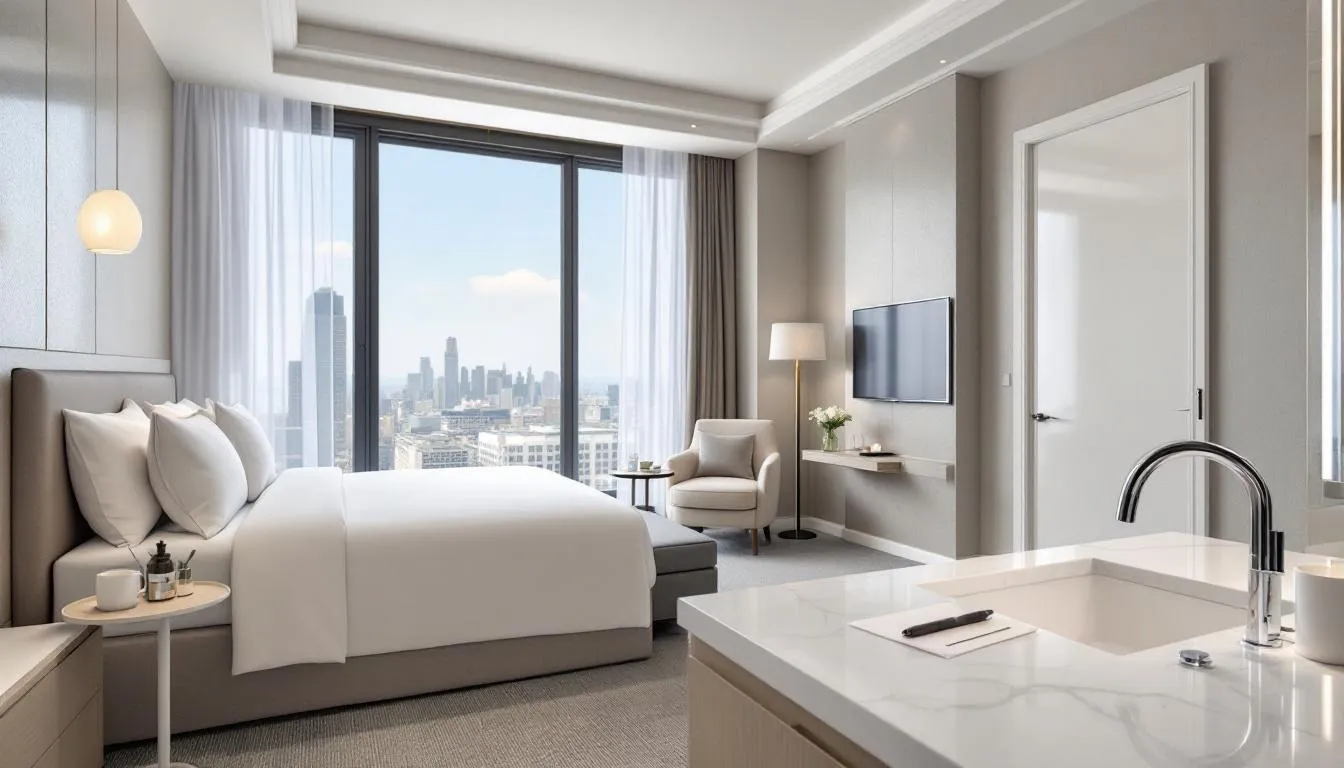
Managing online reviews focused on cleanliness is now vital for revenue. Booking sites highlight these ratings, and hotels with top scores enjoy better search rankings. Consistently excellent housekeeping leads to 15-20% more direct bookings, cutting reliance on costly travel agencies.
Repeat guests often base loyalty on room quality and attentive staff. Housekeeping influences 35-40% of overall satisfaction scores, making it a key driver of customer retention. Higher retention supports premium pricing and lowers marketing costs.
Beyond immediate bookings, strong housekeeping builds brand value and market position. Hotels known for cleanliness weather downturns better and attract more guests, gaining an edge over competitors as cleanliness and safety become top priorities.
Conclusion
Housekeeping efficiency is more than just a cost-saving measure—it’s a strategic advantage that impacts your hotel’s profitability through happier guests, lower costs, and increased revenue. By embracing the metrics, technology, and best practices outlined here, you can transform housekeeping from a back-of-house necessity into a front-line driver of success.
Achieving this requires commitment to data-driven decisions, investing in the right tools, and recognizing that efficient housekeeping delivers measurable value across your business. Hotels that prioritize housekeeping efficiency see better guest satisfaction, streamlined operations, and stronger financial performance—making it a cornerstone of sustainable success in today’s competitive hospitality landscape.
The future belongs to those who treat housekeeping efficiency as essential infrastructure for profitability. Start today, and watch your hotel thrive.
